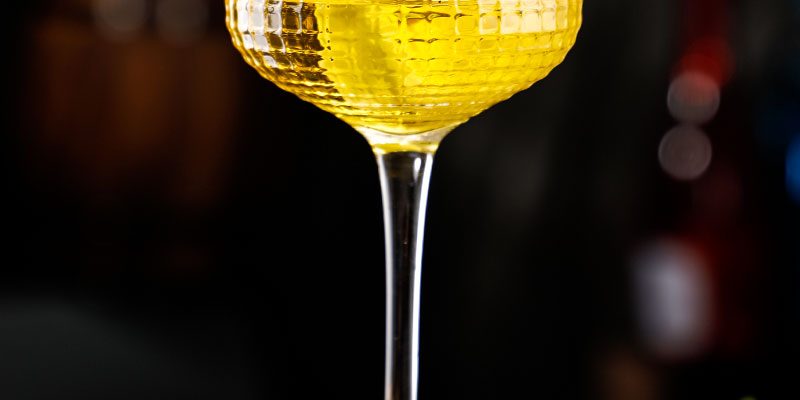Cocktail glass shapes are more than just aesthetics; they have a scientific impact on how we perceive and experience flavors. The intricate relationship between glass form and the senses creates a symphony of taste, aroma, and visual appeal. In this exploration, we delve into the science behind cocktail glass shapes and how they influence the perception of flavors in the world of mixology.
Surface Area and Aromatics: The surface area of a cocktail glass plays a critical role in aroma perception. A glass with a wide bowl exposes a larger surface to the air, allowing the drink’s aromas to develop and concentrate. As we take a sip, our nose interacts with these concentrated aromas, enhancing the overall flavor experience.
Rim Shape and Sip Perception: The shape of the glass’s rim determines where the liquid lands on the palate. A glass with a narrow rim directs the liquid toward the front of the mouth, emphasizing sweetness. A wider rim allows the liquid to spread across the palate, providing a balanced taste experience that encompasses various flavor components.
Glass Curvature and Evaporation: The curvature of a glass influences the rate of evaporation, affecting the intensity of the aromas released. A glass with a wider curvature allows for greater air exposure, leading to increased evaporation and a more pronounced aromatic experience. This interaction between curvature and evaporation contributes to the complexity of flavor perception.
Temperature Regulation and Glass Design: Glass shape can also impact temperature regulation. A glass with a stem, like a martini glass, prevents the drinker’s hand from warming the liquid. Cooler temperatures enhance the perception of acidity and freshness, influencing how the flavors unfold on the palate.
Layering and Visual Stimulation: The visual presentation of a cocktail affects how we anticipate its flavors. A layered cocktail in a tall glass allows us to see the individual components, contributing to our expectations of taste. As we take each sip, our senses reconcile the visual and flavor experiences, enhancing the overall enjoyment.
Glass Material and Thermal Conductivity: The choice of glass material affects thermal conductivity, which influences temperature regulation. Different materials have varying heat-retention properties, impacting the rate at which the drink’s temperature changes. This thermal interplay influences flavor perception and how we experience the cocktail’s evolution as we sip.
In summary, cocktail glass shapes are a harmonious interplay of science and art. The intricate connections between surface area, rim shape, glass curvature, temperature regulation, visual presentation, and glass material create a symphony of sensory experiences. As mixologists consider these scientific principles, they craft cocktails that not only taste delightful but also engage all facets of the palate.


















